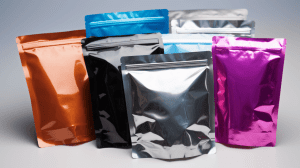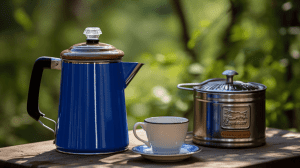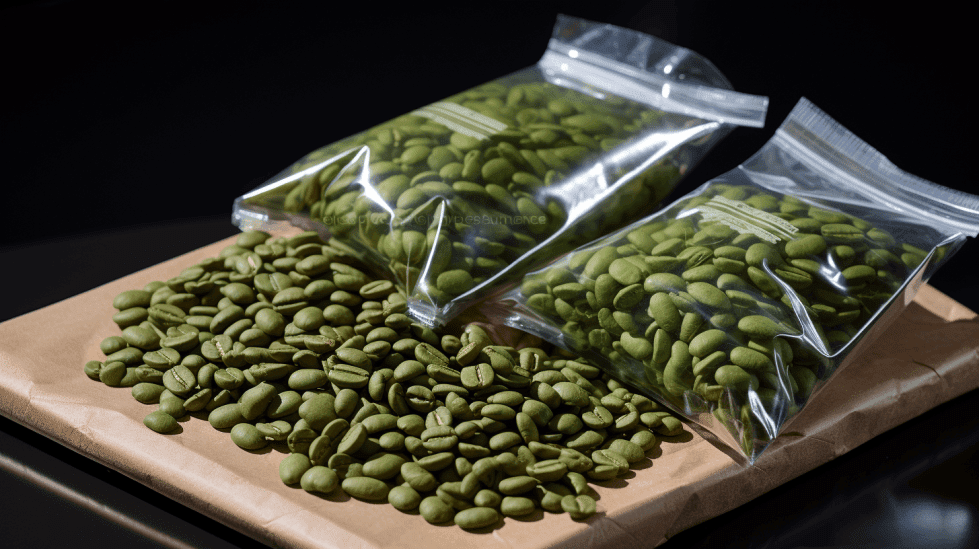How Do Preppers Store Coffee
As a prepper, I understand the importance of having a well-rounded supply of essential items for long-term survival. One of the items that many preppers often overlook is coffee. While it might not be a life-sustaining necessity, coffee plays a crucial role in providing energy, boosting morale, and even bartering during challenging times. In this article, I will discuss how preppers can store coffee for long-term use while maintaining its quality and flavor.
To store coffee effectively, it is essential to comprehend the basics of coffee, such as its various forms and characteristics that affect its shelf-life. There are different storage methods and techniques that cater to distinct coffee types, such as whole beans, ground beans, instant coffee, and green (unroasted) beans. By understanding these fundamentals, preppers can preserve their coffee supply for an extended period without compromising its taste and aroma.
Preparing and consuming stored coffee during times of crisis is also an important consideration for preppers. Knowing how to roast, grind, and brew coffee using unconventional methods and tools can prove valuable in ensuring a consistent supply of this delightful beverage, especially when pre-packaged coffee options are not available. With that in mind, let’s explore the best practices for storing coffee long-term:
Key Takeaways
- Learn the fundamentals of coffee for effective long-term storage.
- Understand various storage methods for different coffee forms.
- Familiarize yourself with coffee preparation techniques for times of crisis.
The Importance of Coffee in Prepping
As a prepper, I understand the significance of including coffee in my emergency preparedness plans. Coffee is not just a luxury item; it serves several purposes for survivalists dealing with doomsday scenarios. Let me share with you why coffee is essential for preppers.
Firstly, coffee provides much-needed energy and alertness during emergencies. The caffeine in coffee acts as a stimulant, helping me stay awake and focused when I need it most. I can vouch for the fact that a warm cup of coffee boosts morale and could be a crucial comfort element in times of stress.
Secondly, coffee has a long shelf life, making it suitable for long-term storage. Survival coffee can be stored for extended periods, ensuring that I’ll have a supply when I need it. I have learned various methods of storing coffee, such as using air-tight containers or freezing it. By sealing green coffee beans in Mylar bags with O2 absorbers, coffee can remain fresh and last even longer.
Lastly, it’s important to note that coffee has some health benefits. For example, it contains antioxidants that can help my body fight off disease. Additionally, coffee is known to enhance physical performance, making it an asset when facing strenuous or physically demanding situations during emergency scenarios.
In conclusion, coffee is an essential commodity for preppers like me who understand its value in emergency preparedness. From the practical benefits of energy and alertness, to the comforting sense of normalcy it provides, coffee has earned its place in my survival plan.
Understanding Coffee Basics
As a coffee enthusiast, I’ve learned that there are several important factors to consider when storing coffee for long term use. In this section, I will briefly cover different types of coffee, as well as coffee beans and the roasting process to help you understand the basics.
Different Types of Coffee
There are two main types of coffee beans: Arabica and Robusta. Arabica beans are generally considered higher quality and offer a smoother, more pleasant taste. Robusta beans, on the other hand, have a stronger, more bitter flavor and are typically used in cheaper blends. When choosing coffee for long-term storage, I would recommend going for green coffee beans, as they have a longer shelf life than roasted beans.
Coffee Beans and Roasting

Green coffee beans are the raw, unroasted seeds of the coffee plant. They can be stored for several years if kept in a cool, dry place away from sunlight and moisture. Roasting green coffee beans is what transforms them into the dark, aromatic beans we typically think of when we imagine coffee. Roasting brings out the flavors and aroma of the coffee and plays a critical role in determining the final taste.
There are different levels of roasts, from light to dark, which will affect the flavor and intensity of the coffee. Light roasts tend to retain more of the original characteristics of the bean, while dark roasts tend to have a stronger, bolder flavor. Personally, I prefer transitioning my stored green coffee beans to roasted beans only when I’m ready to use them, as this ensures the freshest possible taste.
In conclusion, understanding the basics of coffee, including the different types of beans and the roasting process, is essential for preppers looking to store coffee long-term. By choosing green coffee beans for storage and roasting them only when needed, you can ensure a fresh and satisfying cup of coffee even during a long-term storage situation.
Preserving Coffee for Long-Term Storage
Maintaining Ideal Conditions
To store coffee for long-term storage, it’s important to maintain ideal conditions. Coffee beans require protection from heat, humidity, light, and oxygen. To ensure freshness, I store my coffee in a cool, dark place such as a pantry or a cabinet. An opaque, air-tight container with a tight-fitting lid can also be used to prevent air exposure and light infiltration.
Using Mylar Bags

Mylar bags are an excellent option for long-term coffee storage because they help preserve freshness and quality. These metallic-looking bags provide an impermeable barrier against gas and moisture, making them ideal for protecting coffee beans. I use Mylar bags with oxygen absorbers to effectively store coffee beans for years.
The Role of Oxygen Absorbers
Oxygen absorbers play a crucial role in preserving coffee for long-term storage. Oxygen in the air can cause coffee beans to oxidize, resulting in the loss of flavor and aroma over time. By adding an oxygen absorber to a Mylar bag containing coffee beans, I can protect my coffee from the harmful effects of oxygen. This method allows my coffee to maintain its freshness for 20 to 25 years, particularly when storing instant coffee or green coffee beans.
Storing Different Forms of Coffee
Storing Whole Beans
When it comes to storing coffee, I always prefer to keep my whole beans in an airtight container, away from any light, heat, or moisture. This helps maintain their freshness and flavor for as long as possible. Many people also choose to store their whole beans in the freezer, as this can help slow down the oxidation process and extend the beans’ shelf life. However, It’s important to ensure that the beans are sealed in an airtight container or freezer bags to prevent condensation or exposure to moisture.
Storing Ground Coffee
For ground coffee, the same rules apply when it comes to proper storage. I also make sure to keep my ground coffee in an airtight container, away from light, heat, or moisture. Ground coffee has a larger surface area than whole beans, meaning it can oxidize and lose its flavor more quickly. I am conscious of not grinding more coffee than I need in advance, as freshly ground coffee preserves its oils and aroma much better than pre-ground coffee. To store ground coffee, I take extra care to minimize its contact with air, as exposure to air can hasten spoilage.
The Pros and Cons of Instant Coffee

Instant coffee does have some advantages for those seeking convenience and long-term storage options. Being highly processed, it doesn’t have the same freshness and flavor as whole or ground beans, but its low moisture content allows it to last many years without going bad. To preserve the quality of instant coffee, I store it in a cool, dry, dark place, just like my whole beans and ground coffee.
However, the major downside to instant coffee is the loss of nuanced flavor and aroma that you get from freshly brewed coffee made from whole beans or freshly ground coffee. Additionally, instant coffee can sometimes contain additives or fillers that detract from the pure coffee experience. I still consider it an option in scenarios where versatility in storage methods or quick preparation is more important than preserving coffee’s delicate flavor profiles.
Maintaining Coffee Quality
Preventing Flavor Loss
To maintain the taste and flavor of coffee, it’s essential to minimize its exposure to air, moisture, and high temperatures. I always keep my coffee in air-tight containers, which helps lock in the aroma and prevents oxidation. Using oxygen absorbers can also extend the quality and freshness by reducing the air inside the container. Additionally, to prolong the shelf life, I store my coffee beans in a cool, dark, and dry place, away from direct sunlight.
When it comes to preserving coffee for long-term storage, I usually opt for unroasted or green coffee beans. These beans are more stable and can retain their flavor for extended periods when stored properly. I place them in mylar bags with oxygen absorbers, which helps protect the beans from moisture, light, and oxygen.
Avoiding Common Storage Mistakes
It’s crucial to avoid some common mistakes that can result in a loss of coffee’s quality. For instance, I never store my coffee in the freezer or refrigerator. These appliances introduce moisture and fluctuating temperatures that can compromise the coffee’s flavor and make it go rancid.
Moreover, I avoid using transparent containers or placing the coffee near windows or heat sources, as exposure to sunlight or heat can cause the beans to deteriorate faster. Additionally, to prevent mold growth and oxidation, I make sure that the coffee beans are dry before placing them into any storage containers.
Remember, proper coffee storage is essential to maintain the best taste, flavor, and aroma of coffee beans. By following these guidelines and avoiding common mistakes, I can enjoy flavorful, well-preserved coffee for long-term storage.
Coffee Preparation Methods for Preppers
As a prepper, I understand the importance of being prepared for any situation, including making a good cup of coffee. In this section, I will discuss two methods that are perfect for preppers: using a manual coffee grinder and making coffee with a percolator.
Using a Manual Coffee Grinder
A manual coffee grinder is an essential tool for preppers who want to enjoy fresh, quality coffee. It’s convenient, as it doesn’t require electricity compared to electric grinders.
To use a manual grinder, first, you’ll need your coffee beans. Pour them into the grinder and adjust the grind size to your preference. Then, turn the handle to grind the beans, and collect the grounds in a container.
Manual coffee grinders are often portable and durable, making them excellent choices for preppers. They’re also easy to clean and maintain, ensuring that you have a functional grinder when the need arises.
Making Coffee with a Percolator

A percolator is another great option for preppers who want a reliable and straightforward method for making coffee. A percolator usually consists of a pot, a water chamber, a coffee basket, and a lid.
To make coffee with a percolator:
- Fill the water chamber with the desired amount of water.
- Place the coffee grounds in the coffee basket and attach the basket to the percolator.
- Put the percolator on a heat source, such as a campfire or a stove.
- Heat the water until it boils and percolates through the coffee grounds.
- Once the coffee is ready, remove the percolator from the heat source and enjoy your freshly brewed coffee.
A percolator offers convenience and simplicity, making it a perfect choice for preppers. It’s easy to use, portable, and doesn’t require electricity. Additionally, it can be used in various settings, such as a campfire, allowing preppers to enjoy coffee even in challenging situations.
With the right tools and techniques, making coffee in a survival situation is possible. Both manual coffee grinders and percolators offer convenience, simplicity, and portability, making them excellent choices for preppers who want to enjoy their favorite cup of coffee in any situation.
Storing Pre-Packaged Coffee Options
One great option for preppers looking to store coffee long-term is to consider purchasing pre-packaged coffee options, such as canned coffee. For example, Maxwell House offers canned coffee that has a long shelf life and is already packaged for long-term storage.
I recommend looking for coffee with a long shelf life, some brands like Maxwell House often have expiration dates that are a couple of years out, making them ideal for prepping. It’s important to inspect the packaging and ensure there are no damages or openings that could compromise the shelf life of the coffee.
When storing coffee, it’s crucial to consider not just the expiration date but also the way it’s stored. Coffee should be kept in an airtight, opaque container to protect it from light, moisture, and air exposure. These elements can rapidly degrade the quality and potency of the coffee. Some pre-packaged options will already come in airtight containers, like cans or plastic tubs, which make storage much more convenient.
If the pre-packaged coffee you’ve purchased doesn’t come in an ideal container, simply transfer the coffee to an airtight container of your choice. These can be readily found online or at your local store and come in various sizes and materials. Make sure the container is opaque or stored in a dark, cool place away from direct sunlight.
Remember that coffee is sensitive to temperature fluctuations and humidity, so storing it in a stable environment is key to preserving its freshness for as long as possible. Basements, pantries, and cool cabinets are suitable options for coffee storage.
By following these guidelines, you can confidently stock up on pre-packaged coffee options like Maxwell House canned coffee, ensuring that you have a bountiful coffee supply ready for any situation. Just be sure to keep it airtight, opaque, and cool to maintain that delicious coffee flavor for years to come.
Frequently Asked Questions
What are the best ways to store ground coffee for long-term use?
The ideal way to store ground coffee for long-term use involves using airtight containers and storing them in a cool, dark location. A popular method among preppers is to store green coffee beans in Mylar bags with oxygen absorbers, effectively extending the shelf life significantly. When needed, you can roast and grind the beans to enjoy fresh coffee.
Can freeze-dried coffee be stored for extended periods?
Yes, freeze-dried coffee can be stored for extended periods. In fact, the easiest way for preppers to store coffee is by buying survival coffee, which is freeze-dried and made specifically for long-term storage. This type of coffee can last for many years when stored properly.
Is it a good idea to store coffee beans in the freezer?
Storing coffee beans in the freezer can be beneficial for preserving their freshness and flavor, especially for ground coffee. However, for long-term storage, it is better to store green, unroasted coffee beans in Mylar bags with oxygen absorbers, as mentioned earlier. If you choose to store coffee in the freezer, make sure to use airtight containers to prevent moisture and freezer odors from compromising the quality of the beans.
What is the shelf life of coffee stored in Mylar bags with oxygen absorbers?
When stored properly, the shelf life of coffee beans in Mylar bags with oxygen absorbers can be up to 20 years. This method ensures that air, humidity, moisture, and light do not adversely affect the quality and freshness of the coffee beans. Remember to label your bags with the date to keep track of their age.
How can I keep coffee fresh at home for several months?
To keep coffee fresh at home for several months, follow these basic tips:
- Store the coffee in an airtight container to prevent exposure to air and moisture.
- Keep the container in a cool, dark place, away from direct sunlight, heat, and moisture.
- If possible, buy whole coffee beans and grind them only when you’re ready to make a cup of coffee. Grinding exposes more surface area and accelerates aging.
Remember, freshly roasted, non-stored coffee will generally have the best taste and aroma.
Are there specific coffee brands recommended for survival and long-term storage?
Certain coffee brands specialize in long-term storage and survival scenarios. Survival coffee is one such example, made specifically for this purpose. These brands usually offer freeze-dried coffee that is vacuum-sealed, ensuring maximum freshness and longevity. Checking reputable prepping and survival resources or forums can provide further recommendations on specific coffee brands suitable for long-term storage.








